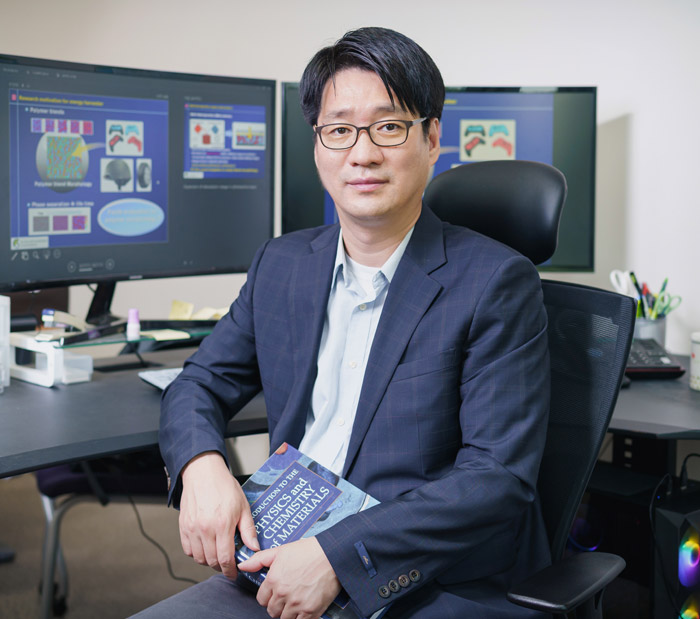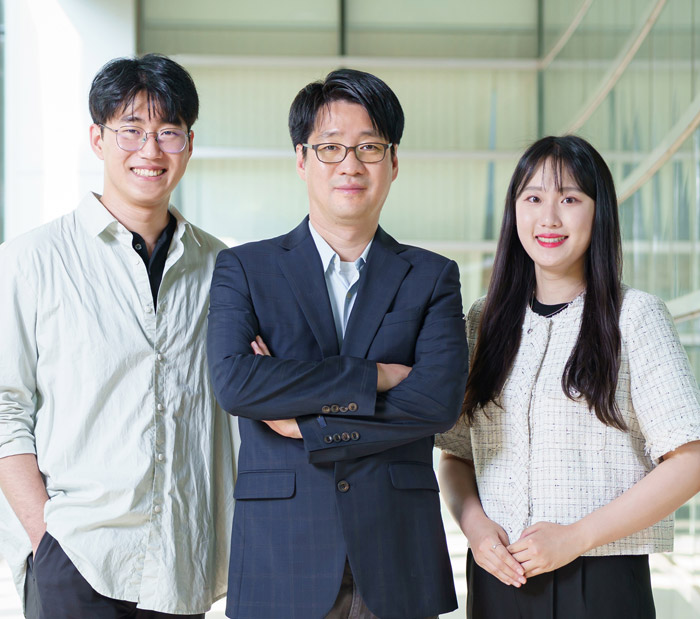Research Stories
Development of high-performance organic photovoltaics under low light environments through controlling the morphology of
Demonstration of indoor organic photovoltaics that achieves power conversion efficiencies exceeding 30% under low light conditions.
Overcoming charge loss by controlling the phase separation of donor and acceptor, which is a positive/negative charge transport pathway in the photoactive layer.
Expected to be broadly applied to the Internet of Things and various indoor applications.
Chemistry
Prof.
KO, DOO HYUN
Chihyung Lee, Jung-Hyun Lee
On April 22, 'Over 30% efficient indoor organic photovoltaics enabled by morphological modification using two compatible non-fullerene acceptors' written by Professor Doo-Hyun Ko's research party was recognized for excellent research and was published in 'Advanced Energy Materials (IF=29.368)', a world-renowned academic journal.
Professor Ko’s research party demonstrated an indoor organic photovoltaic cell that achieves power conversion efficiency exceeding 30% by introducing an organic photoactive layer that enables efficiently harvesting the photons under the indoor environment of low irradiance. The research results of the high-performance indoor organic photovoltaic cells are expected to be utilized in the indoor Internet of Things and smart-farm fields that require a continuous power supply.
The photovoltaic efficiency is determined by effectively extracting the charge carriers, generated inside the photoactive layer of the photovoltaic cell, toward the electrode without recombination loss. Notably, under indoor lighting in which intensities are 10-100 times lower relative to the sunlight, charge carrier loss significantly contributes to a decrease in the power conversion efficiency.
In this study, the photoactive layer was fabricated by blending two well-miscible non-fullerene acceptors and polymer donors. The introduced photoactive layer features nanoscale phase separation between donor and acceptor with high para-crystallinity. Through these separated donor and acceptor phases, the positive (hole) and negative charge (electron) carriers can be transported toward the electrode without recombination loss, respectively. Thereby, the organic photovoltaic cells reported by Professor Ko’s research party achieved a power conversion efficiency of over 30% under indoor circumstances of low irradiance by fabricating the superior photoactive layer.
Participating researchers and authors: Chihyung Lee (co-first author, SKKU, Ph.D. candidate), Jung-Hyun Lee (co-first author, SKKU, master course), Hyun Hwi Lee (second author, Pohang Accelerator Research Institute, researcher), Minwoo Nam (corresponding author, Sangji University, assistant professor), Doo-Hyun Ko (corresponding author, SKKU, associate professor).
[Figure 1] (a) Image of organic photovoltaic under low light conditions. (b) AFM image of donor and acceptor phase separation through morphology controlling photoactive layer. (c) J-V characteristics of organic photovoltaic under low light environment (250, 500, and 1000 lux 3000 K LED)


